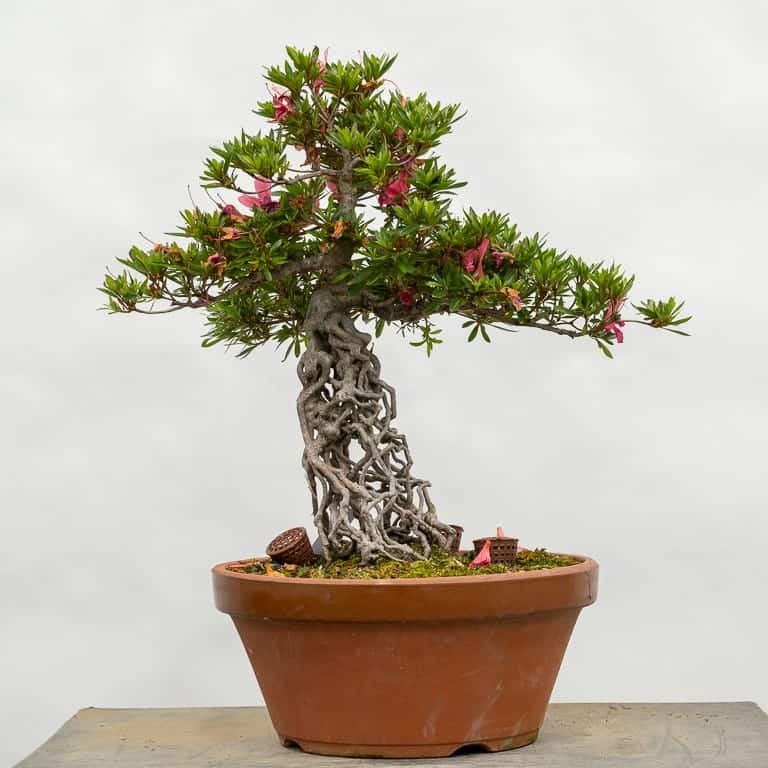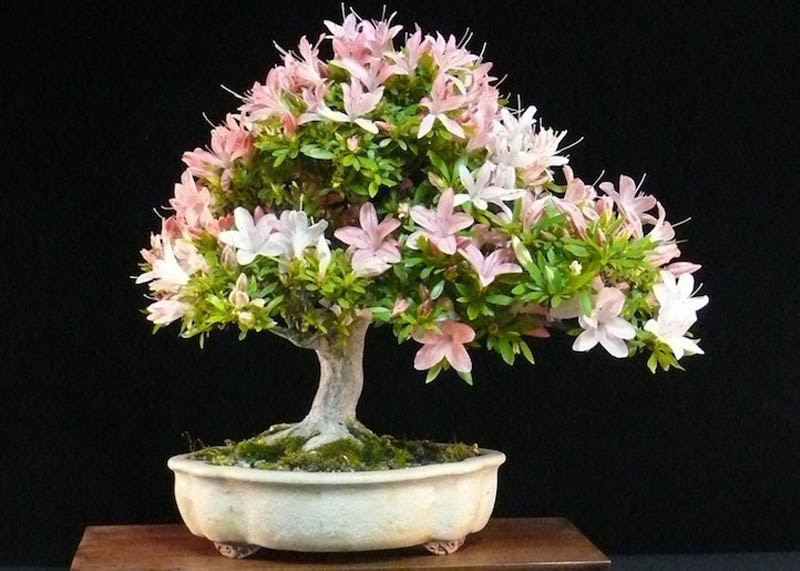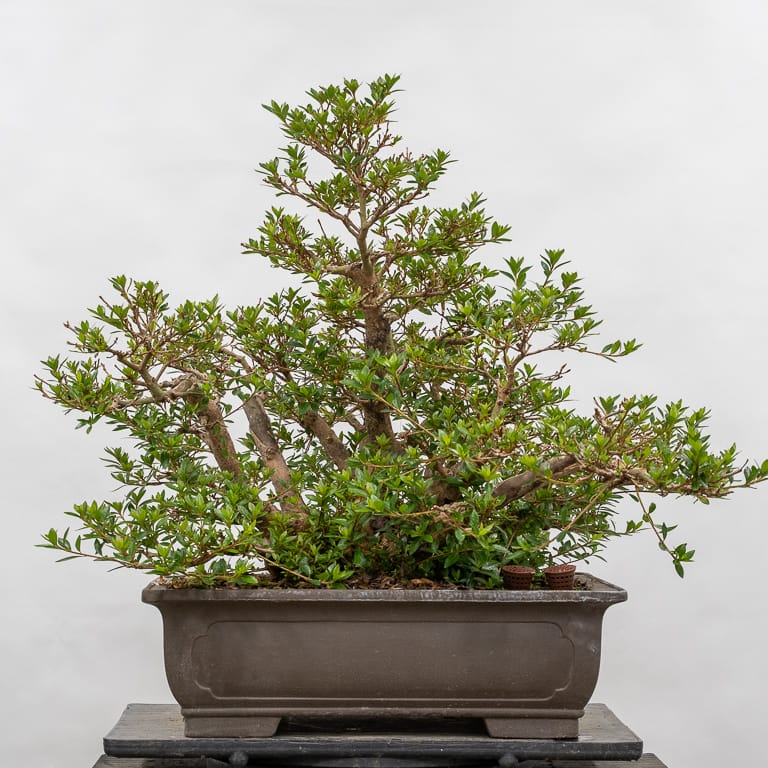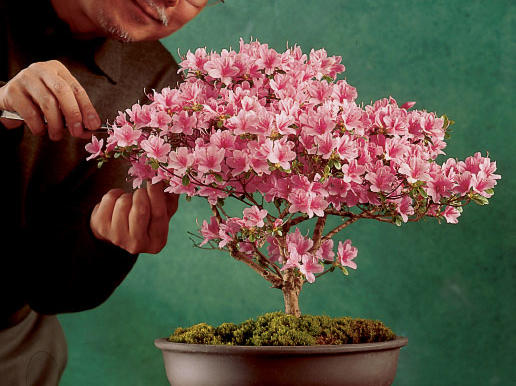Azalea bonsai is a delicate and captivating plant that can bring beauty and serenity to any space. Whether you’re a seasoned gardener or a beginner, these 10 tips will help you successfully grow and care for your very own azalea bonsai.
From selecting the right pot and soil, to providing optimal lighting and nutrition, this article will guide you through the essential steps to ensure your azalea bonsai thrives and flourishes. Get ready to embark on an exciting journey of bonsai cultivation as you discover the secrets to creating a stunning miniature masterpiece in your own home.
1. Choose the Right Azalea Variety
Research Different Azalea Varieties
When choosing an azalea variety for your bonsai, it’s important to do some research to find the one that suits your preferences and the conditions in your area. There are many different azalea varieties available, each with its own unique characteristics. Some popular choices include Satsuki azaleas, Kurume azaleas, and Indica azaleas. By researching different varieties, you can choose one that has the right color, foliage, and growth habits for your bonsai.
Consider the Climate and Conditions
When selecting an azalea variety, it’s crucial to consider the climate and conditions in your area. Azaleas thrive in temperate climates and prefer a slightly acidic soil with good drainage. They also require a certain amount of sunlight and shade to grow and bloom properly. By choosing a variety that is well-suited to your climate and conditions, you’ll increase the chances of success in growing a healthy and vibrant azalea bonsai.
Select a Size and Shape for Your Bonsai
Azalea bonsai comes in various sizes and shapes, allowing you to choose the one that best suits your aesthetic preferences. Some people prefer a compact and bushy bonsai, while others prefer a more upright and tree-like shape. Consider the space you have available for your bonsai and the overall look you want to achieve. Whether you choose a formal upright style, cascade style, or any other shape, make sure it complements the natural growth pattern of your chosen azalea variety.
2. Find the Perfect Container
Choose the Right Size and Depth
Selecting the appropriate container for your azalea bonsai is essential for its overall health and growth. The size and depth of the container play a vital role in providing sufficient space for the roots to grow and thrive. A shallow container is typically ideal for azalea bonsai, as it helps promote a flatter root system and allows for better water drainage. However, ensure that the chosen container is also wide enough to accommodate the root ball of your selected azalea variety.
Ensure Proper Drainage
Good drainage is crucial for the health of your azalea bonsai. Without proper drainage, excess water can accumulate in the container and lead to root rot. When choosing a container, look for one with drainage holes at the bottom to allow excess water to escape. You can also add a layer of drainage material, such as small rocks or gravel, at the bottom of the container to further enhance drainage.
Consider the Aesthetic Appeal
While functionality is important, it’s also worth considering the aesthetic appeal of the container. Choose a container that complements the style and color of your azalea bonsai. Consider the material, texture, and color of the container to create a harmonious and visually pleasing composition between the bonsai and its container. Remember, the container should enhance the overall beauty of your azalea bonsai without overpowering it.

3. Use the Right Soil Mix
Balance between Water Retention and Drainage
Finding the right soil mix is crucial for the healthy growth of your azalea bonsai. Azaleas prefer a soil mix that retains moisture without becoming waterlogged. An ideal soil mix for azaleas should have a balance between water retention and drainage. You can achieve this by mixing organic matter, such as peat moss or compost, with an inorganic component like perlite or pumice. This will provide adequate moisture for the roots while also allowing excess water to drain away.
Consider pH Levels and Nutritional Requirements
Azaleas prefer slightly acidic soil with a pH ranging from 4.5 to 6.0. It’s important to consider the pH levels when selecting or preparing a soil mix for your azalea bonsai. You can adjust the pH levels by adding suitable acidic amendments to the soil mix, such as elemental sulfur. Additionally, azaleas have specific nutritional requirements, including a need for adequate amounts of nitrogen, phosphorus, and potassium. Using a balanced, slow-release fertilizer designed for acid-loving plants can help provide the necessary nutrients.
Look for a Well-draining Soil Mix
A well-draining soil mix is essential to prevent waterlogged roots and potential root rot. Azaleas dislike stagnant water around their roots, so it’s important to choose or prepare a soil mix that allows for good drainage. Look for soil mixes specifically formulated for bonsai or acid-loving plants, as they usually have the right structure to promote both water drainage and root health. Avoid using heavy or clayey soil mixes, as they tend to retain too much water and may suffocate the roots.
4. Watering Timing and Techniques
Watering Frequency
Proper watering is crucial for the health of your azalea bonsai. Water your bonsai when the top inch of the soil feels slightly dry to the touch. Azaleas prefer consistently moist soil but can suffer if the soil becomes waterlogged or if they are left to dry out completely. The frequency of watering will depend on various factors, such as the climate, container size, and soil mix. As a general guideline, check the moisture level of the soil regularly and adjust your watering schedule accordingly.
Avoid Overwatering
Overwatering is a common mistake when caring for azalea bonsai. It’s important to avoid keeping the soil excessively wet, as this can lead to root rot and other issues. Allow the soil to dry slightly between watering sessions, but never let it become bone dry. Monitor the moisture levels of the soil and adjust your watering habits accordingly. It’s better to underwater slightly than to overwater, as azaleas can recover from slight drought stress more easily than from root rot caused by overwatering.
Use the Right Technique
When watering your azalea bonsai, it’s important to use the right technique to ensure thorough hydration without causing damage. Avoid splashing water on the leaves and flowers, as this can lead to fungal diseases. Instead, water the soil gently and evenly, allowing the water to penetrate the root zone. A useful technique is to water until you see water draining from the bottom of the container, indicating that the soil is adequately saturated. This will help ensure that the entire root system receives sufficient moisture.

5. Provide Adequate Sunlight and Shade
Balance between Sun and Shade
Azaleas need a balance between sunlight and shade to thrive as bonsai. While they require a certain amount of sunlight for energy production and flower development, they can suffer from scorching if exposed to intense direct sunlight for extended periods. Place your azalea bonsai in a location that receives morning sun and afternoon shade. This will provide the necessary light for optimal growth while protecting the leaves and flowers from excessive heat and sunburn.
Place in a Suitable Location
The location you choose for your azalea bonsai can greatly impact its health and overall appearance. It’s important to select a location that provides the right light conditions as well as adequate protection from harsh weather elements. Choose a spot that offers the perfect balance of sunlight and shade throughout the day. Additionally, consider the temperature and humidity levels in the chosen location, as extreme heat or cold can negatively affect the growth and flowering of azaleas.
6. Feeding and Fertilization
Choose the Right Fertilizer
Proper feeding and fertilization are essential for the healthy growth and development of your azalea bonsai. When selecting a fertilizer, choose one specifically formulated for acid-loving plants or bonsai. These fertilizers usually have the right balance of nutrients, including nitrogen, phosphorus, and potassium, to support the growth and blooming of azaleas. Avoid using general-purpose fertilizers or ones with high nitrogen levels, as this can promote excessive vegetative growth at the expense of flower production.
Follow a Feeding Schedule
Establishing a feeding schedule is important to ensure that your azalea bonsai receives an adequate and consistent supply of nutrients. As a general guideline, fertilize your bonsai every four to six weeks during the growing season, which typically begins in spring and ends in early fall. Adjust the frequency and dosage of fertilizer based on the specific instructions provided by the manufacturer and the needs of your azalea variety.
Avoid Excessive Fertilization
While fertilizing is beneficial for azalea bonsai, it’s important not to overdo it. Excessive fertilization can lead to salt buildup in the soil, which can damage the roots and cause nutrient deficiencies. Always follow the recommended dosage instructions provided by the fertilizer manufacturer, and never exceed the recommended amounts. Regularly monitor the health and appearance of your bonsai, and adjust your fertilization practices accordingly.

7. Pruning and Training Techniques
Maintain the Desired Shape
Pruning is an essential aspect of bonsai cultivation, and it plays a crucial role in maintaining the desired shape of your azalea bonsai. Regular pruning helps control the size of the bonsai, remove unwanted branches, and promote ramification (the development of smaller branches). Use bonsai pruning shears or scissors to carefully remove branches or foliage that detract from the overall design of your bonsai. When pruning, aim to create a harmonious balance between open spaces and foliage to achieve an aesthetically pleasing composition.
Remove Weak or Overgrown Branches
During regular maintenance, it’s important to identify and remove weak or overgrown branches. Weak branches may indicate poor health, lack of vigor, or disease, and removing them helps redirect resources to healthier parts of the bonsai. Overgrown branches, on the other hand, can disrupt the overall balance and shape of your azalea bonsai. Carefully evaluate the branches and remove those that are out of proportion or detract from the desired aesthetic.
Wire Training for Structural Development
Wire training is a technique used in bonsai cultivation to shape the branches and trunk of the tree-like structure. It involves wrapping flexible bonsai wire around branches and gently bending them into the desired position. Azaleas have relatively brittle branches, so caution must be exercised when applying wire. Use gentle bends and avoid excessive pressure that could damage the branches. After the desired shape is achieved, monitor the wire regularly and remove it promptly to prevent wire cutting into the bark.
8. Protect from Pests and Diseases
Inspect Regularly for Pests
Regular inspection is crucial to identify and address pest problems early on. Common pests that can affect azalea bonsai include aphids, mites, scale insects, and caterpillars. Look for signs of pest infestation, such as distorted foliage, webs, or small insects on the leaves. If pests are detected, take appropriate action immediately to prevent further damage. The use of insecticidal soaps, neem oil, or other organic pest control methods can help effectively manage pests without harming the bonsai.
Use Organic Pest Control Methods
When dealing with pests in your azalea bonsai, it’s advisable to use organic pest control methods whenever possible. Chemical pesticides can be harsh and may harm beneficial insects or disrupt the balance of your bonsai’s ecosystem. Organic treatments such as insecticidal soaps, neem oil, or homemade remedies using natural ingredients can effectively control pests without causing harm to the bonsai or the environment. Always follow the instructions provided with any pest control product and use them in moderation.
Treat Diseases Promptly
Azaleas are susceptible to various diseases, including fungal infections and leaf spot diseases. It’s important to monitor the health of your bonsai and promptly address any signs of disease. Treatments may include removing infected foliage, improving ventilation around the bonsai, or using fungicides specifically formulated for azaleas or bonsai. Regularly inspect the leaves and stems for any discoloration, spots, or unusual growth, and take appropriate action as soon as a problem is detected to prevent the spread of disease.

9. Regular Repotting
Determine the Right Repotting Frequency
Repotting is an essential part of bonsai cultivation, as it helps refresh the soil, prevent root binding, and promote healthy root growth. The frequency of repotting azalea bonsai will depend on various factors such as the age of the bonsai, its growth rate, and the condition of the root system. As a general guideline, azaleas are usually repotted every two to three years in early spring, before new growth begins. Monitor the health and growth of your bonsai, and repot when necessary to ensure optimal root health.
Use Proper Repotting Techniques
When repotting your azalea bonsai, it’s important to use proper techniques to minimize root disturbance and ensure a successful transition. Carefully remove the bonsai from its current container, gently prune any circling or damaged roots, and trim back a portion of the foliage to reduce water loss. Prepare the new container by adding a layer of fresh soil mix at the bottom, then position the bonsai in the container, spreading the roots evenly. Fill in the remaining space with the soil mix, firming it gently around the roots.
Do Not Disturb the Roots
When repotting azalea bonsai, it’s crucial not to disturb the roots excessively. Azaleas have delicate, fibrous roots that can be easily damaged, leading to transplant shock or root rot. Handle the roots with care, avoiding excessive pulling or tearing. If you encounter any dense or tangled roots, gently untangle them with your fingers or a bonsai root rake. After repotting, water the bonsai thoroughly to help settle the soil around the roots and minimize air pockets.
10. Winter Care
Protect from Freezing Temperatures
Azaleas are sensitive to freezing temperatures, and prolonged exposure to frost can damage or kill your bonsai. It’s important to protect your azalea bonsai from freezing temperatures during the winter months. If you live in a region with severe winters, consider moving your bonsai to a sheltered location, such as an unheated garage or a protected outdoor area. You can also wrap the container with insulating material or use a frost cover to provide additional protection from cold winds and frost.
Avoid Sudden Temperature Changes
In addition to protecting your azalea bonsai from freezing temperatures, it’s important to avoid sudden temperature changes that can stress or damage the plant. Azaleas prefer a stable and moderate temperature, so avoid placing your bonsai in locations with extreme temperature fluctuations, such as near heating vents or drafty windows. Sudden shifts between warm indoor temperatures and cold outdoor temperatures can shock the plant and affect its overall health and longevity.
Reduce Watering during Dormant Period
During the dormant period, which usually occurs in winter, azaleas require less water compared to the active growing season. Reduce the frequency of watering, allowing the soil to partially dry between waterings. Be cautious not to let the soil completely dry out, as this can lead to root damage. Monitor the moisture levels of the soil using your finger or a moisture meter, and adjust your watering schedule accordingly. It’s better to underwater slightly than to overwater during the dormant period.
By following these ten tips for growing azalea bonsai, you can ensure the health, vigor, and aesthetic appeal of your bonsai masterpiece. Remember to choose the right azalea variety, find the perfect container, use the right soil mix, water properly, provide adequate sunlight and shade, feed and fertilize appropriately, prune and train with care, protect from pests and diseases, repot regularly, and provide winter care. With patience, dedication, and proper care, your azalea bonsai will bring you joy and beauty for years to come.

Creativity in writing is becoming a scarcity.
Between the constant temptation to dance for the algorithm and the staggering advance of artificial intelligence, our world is spiraling into what I believe to be a creative crisis.
For us to remain an emotionally-aware race, while at the same time pushing humanity forward, we must cultivate and champion creativity both in ourselves and in the generations to come and write as we feel.
This is why I’m dedicating the next decade of my life to exploring the subject of creativity as both an artist and teacher.
I hope you enjoy my content
Best
James
My Bonsai Journey

